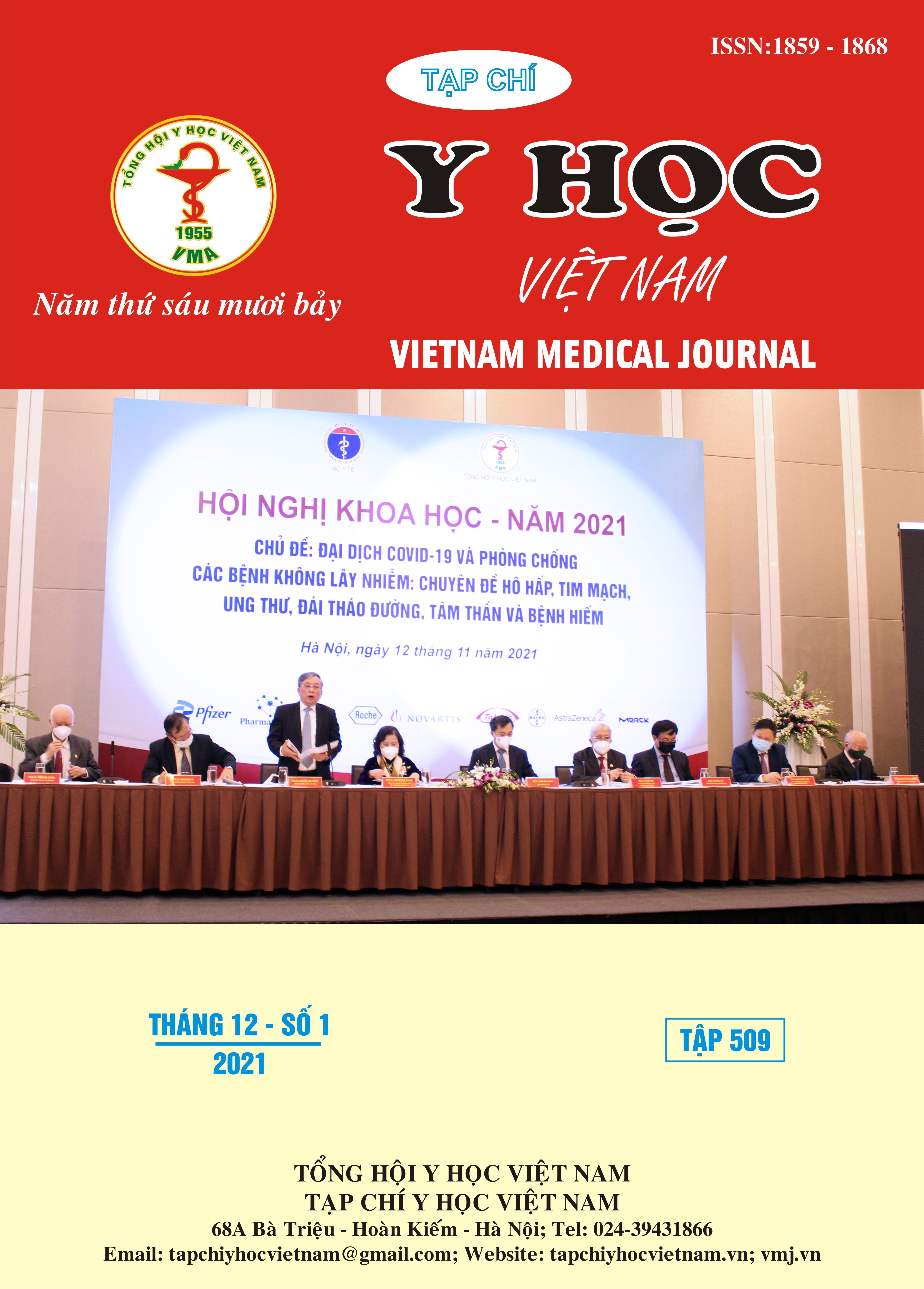ĐẶC ĐIỂM LÂM SÀNG VÀ ĐIỀU TRỊ SỐC SỐT XUẤT HUYẾT DENGUE Ở TRẺ EM TẠI BỆNH VIỆN NHI ĐỒNG 1 TỪ 2019-2020
Nội dung chính của bài viết
Tóm tắt
Đặt vấn đề -Mục tiêu nghiên cứu: sốt xuất huyết dengue là bệnh có tỷ lệ mắc cao, là 1 trong các vấn đề y tế quan trọng ở Miền Nam, Việt Nam. Nghiên cứu này xác định đặc điểm dịch tễ, lâm sàng, cận lâm sàng và các biệp pháp điều trị sốc sốt xuất huyết dengue ở trẻ em nhập điều trị sớm tại bệnh viện Nhi Đồng 1. Đối tượng và phương pháp nghiên cứu: Mô tả hàng loạt ca, tiến cứu tất cả bệnh nhi ≤ 16 tuổi chẩn đoán sốc sốt xuất huyết dengue tại bệnh viện Nhi Đồng 1 trong thời gian 01/07/2019 đến 30/06/2020. Kết quả: Có 35 bệnh nhi sốc sốt xuất huyết dengue được nhận vào nghiên cứu. Độ tuổi trung bình là 6,8 ± 3,9 tuổi, nhóm tuổi 5 – 10 tuổi thường gặp nhất. Tỉ lệ Nam/Nữ là 1/1,1. Trẻ béo phì chiếm tỉ lệ 17,1%. Tỉ lệ sốc nặng là 17,1%, sốc kéo dài là 2,9%, tái sốc là 2,9%. Triệu chứng lâm sàng lúc sốc: gan to (88,6%), chấm xuất huyết (77,1%), đau bụng (34,3%), xuất huyết tiêu hoá (8,6%), rối loạn tri giác (5,8%), chảy máu nướu răng (2,9%). Tỉ lệ suy hô hấp là 40%. 62,8% bệnh nhân tổn thương gan, 14,3% suy gan. Tỉ lệ rối loạn đông máu là 83,9%. Đông máu nội mạch lan tỏa gặp trong 45,2% trường hợp. Tổng lượng dịch truyền là 163,5 ± 43,8 ml/kg với thời gian truyền trung bình là 31,3 ± 7,9 giờ. Có 60% trường hợp cần truyền cao phân tử, 11,4% truyền chế phẩm máu, 5,7% truyền albumin. Kết luận: 17,1% trường hợp sốc nặng, tái sốc và sốc kéo dài là 5,8%. Những biểu hiện lâm sàng thường gặp lúc sốc là: gan to, chấm xuất huyết, đau bụng, xuất huyết tiêu hóa. 40% bệnh nhân suy hô hấp, trong đó có 1 trường hợp thở máy. Tỉ lệ tổn thương gan, rối loạn đông máu khá cao. Có đến 60% truyền cao phân tử.
Chi tiết bài viết
Từ khóa
sốc sốt xuất huyết dengue
Tài liệu tham khảo
2. Halstead S. B. (1988), "Pathogenesis of dengue: challenges to molecular biology", Science, 239(4839), pp. 476-81.
3. Lương Anh Tuấn (2007), Mối liên quan giữa tình trạng béo phì với đặc điểm lâm sàng và điều trị trong sốc sốt xuất huyết dengue ở trẻ từ 2 đến 15 tuổi, Luận văn Bác sĩ chuyên khoa cấp II, Đại học Y dược TP. Hồ Chí Minh.
4. Huỳnh Nguyễn Duy Liêm (2009), Đặc điểm dịch tễ, lâm sàng, cận lâm sàng và điều trị ở trẻ em bị sốc sốt xuất huyết có rối loạn đông máu, Luận văn Thạc sĩ Y học, Đại học Y dược TP. Hồ Chí Minh.
5. Văn Thị Cẩm Thanh (2017), Đặc điểm dịch tễ, lâm sàng, cận lâm sàng và điều trị bệnh nhân sốt xuất huyết dengue nặng có sốc tại bệnh viện Nhi đồng 2. Luận văn thạc sĩ y học, Đại học Y dược TPHCM.
6. Ngô Thị Thanh Thủy (2010), Đặc điểm rối loạn chức năng gan và rối loạn đông máu trên bệnh nhân sốt xuất huyết dengue điều trị tại bệnh viện Nhi đồng 2, Luận văn tốt nghiệp Bác sĩ nội trú, Đại học Y dược TP. Hồ Chí Minh.
7. Nguyễn Minh Tiến (2005), Tổn thương các cơ quan trong sốc sốt xuất huyết Dengue kéo dài ở trẻ em, Luận án Bác sỹ chuyên khoa II, Đại học Y dược TP Hồ Chí Minh.
8. Tạ Văn Trầm, Hoàng Trọng Kim và Nguyễn Trọng Lân (2003), "Các yếu tố liên quan đến sốc sốt xuất huyết Dengue kéo dài ở trẻ em", Tạp chí Nhi khoa, 11(1), tr. 64-70.


